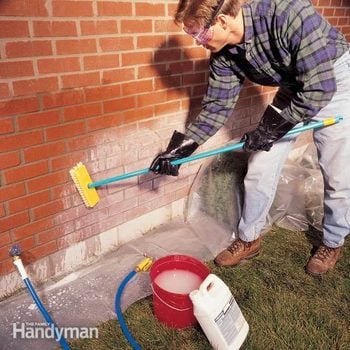How to Handle Efflorescence on Brick Chimneys
Updated: Jun. 30, 2017Moisture moving through bricks causes white mineral deposits on the brick surface and in the case of a chimney, it may indicate that you need a flue liner.

- Time
- Complexity
- Cost
- A full day
- Advanced
- Varies
Efflorescence in brick chimneys
The white material which appears on brick is a powdery mass of minerals called efflorescence. Efflorescence occurs when moisture moves through concrete or other masonry. The moisture picks up minerals, carries them to the surface of the masonry and leaves them behind in the form of tiny crystals on the surface as the moisture evaporates. The minerals themselves do no harm. You can simply brush them away.
A small amount of efflorescence is common. But if the amount of efflorescence on your chimney is excessive it may be cause for concern. Some could be caused by rainfall soaking into the brick. But more likely—and more serious—the problem is moisture in warm air from inside the house condensing on the interior of the chimney during cold weather. Or more alarming, your flue liner is cracked or broken and moist combustion gases from your furnace and water heater are leaking out onto the cold brick and condensing. This is a bad condition that will cause rapid brick and mortar deterioration.
We recommend that you have your chimney inspected by a licensed heating contractor or by a certified chimney sweep before the heating season begins this year. Either one will tell you whether you have to install a new chimney flue or liner, or point to any other moisture source that may be causing the excessive efflorescence.
Required Tools for this Project
You don’t need tools to start. You need to contact a contractor or a chimney sweep.
